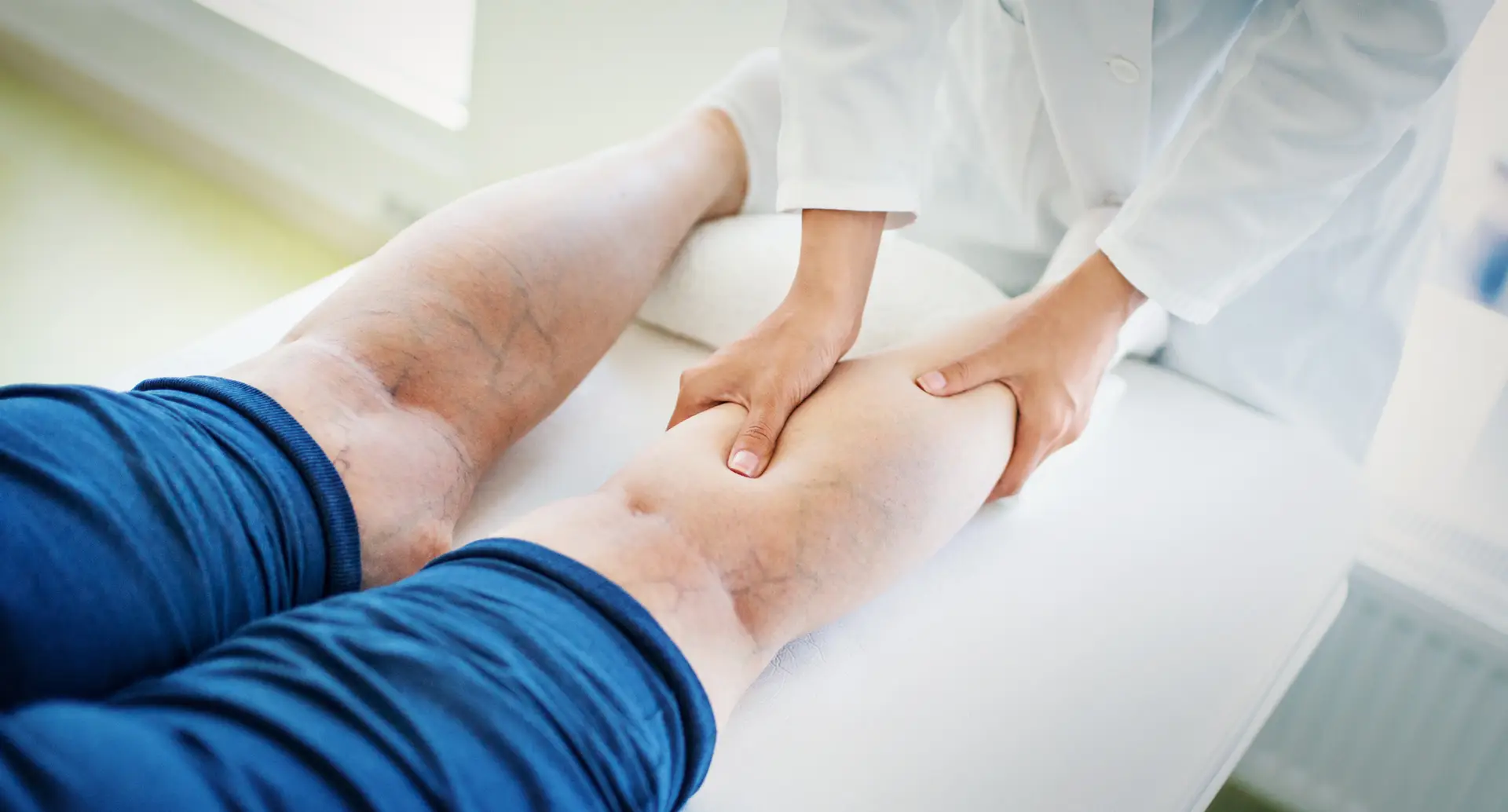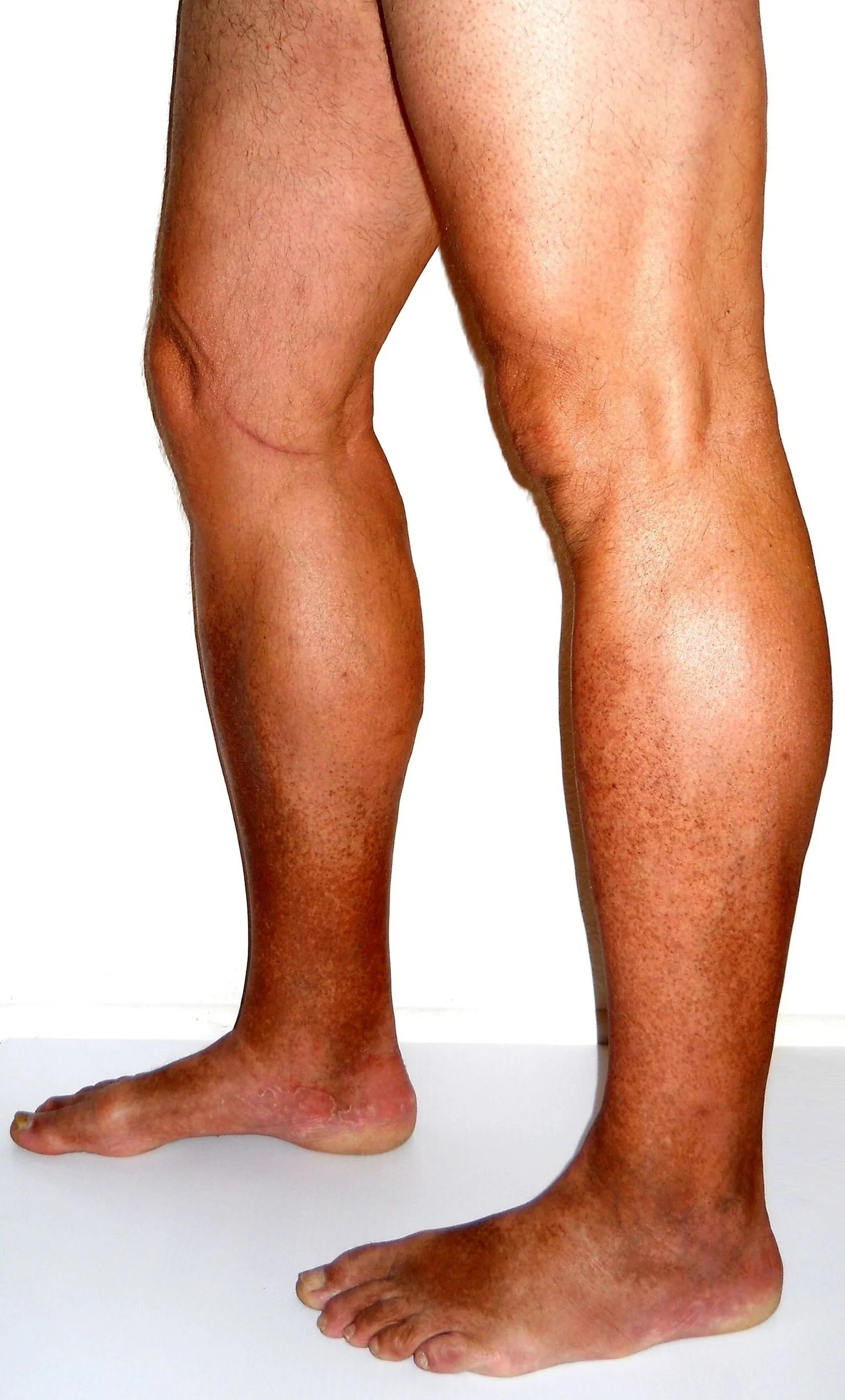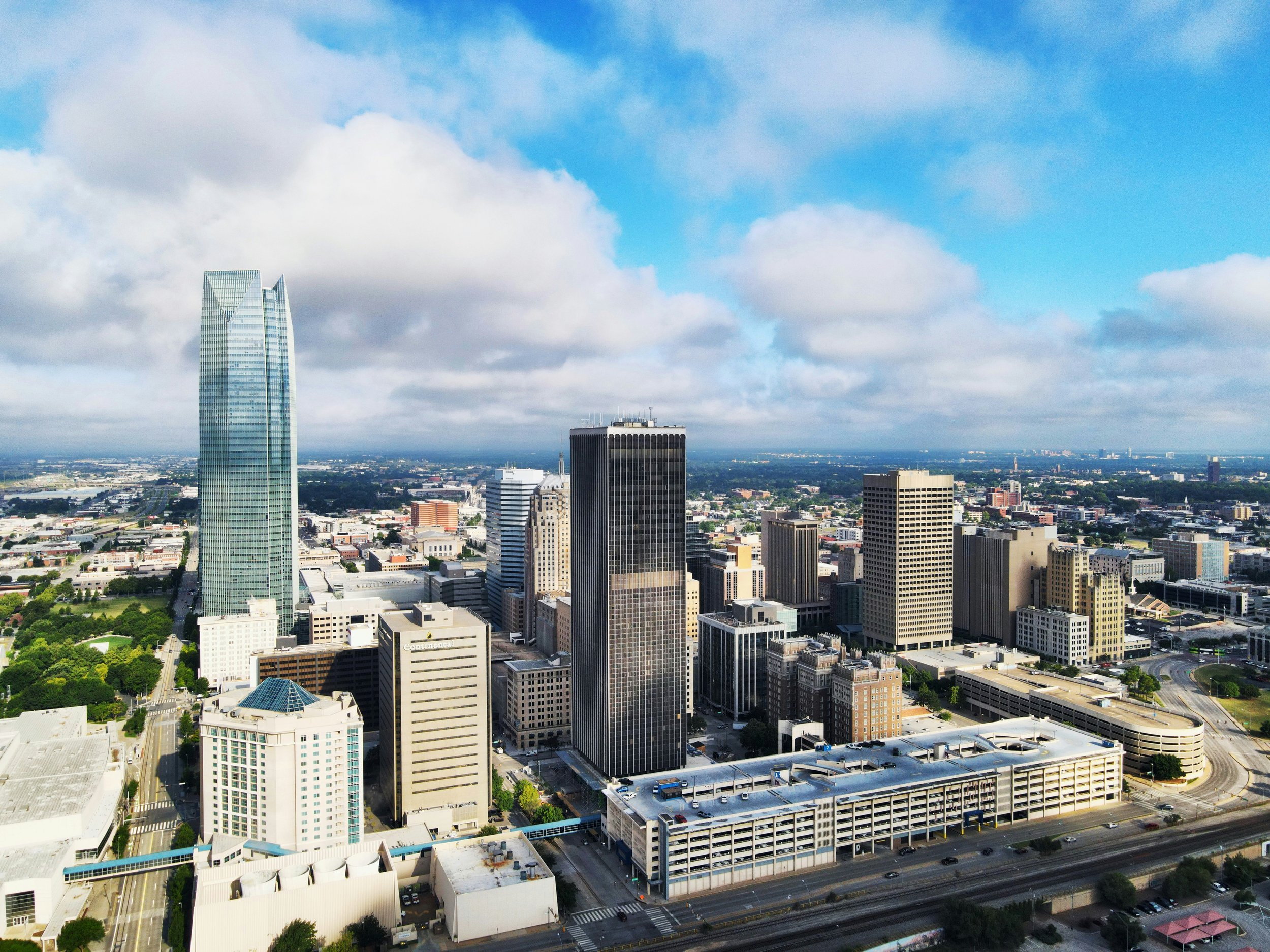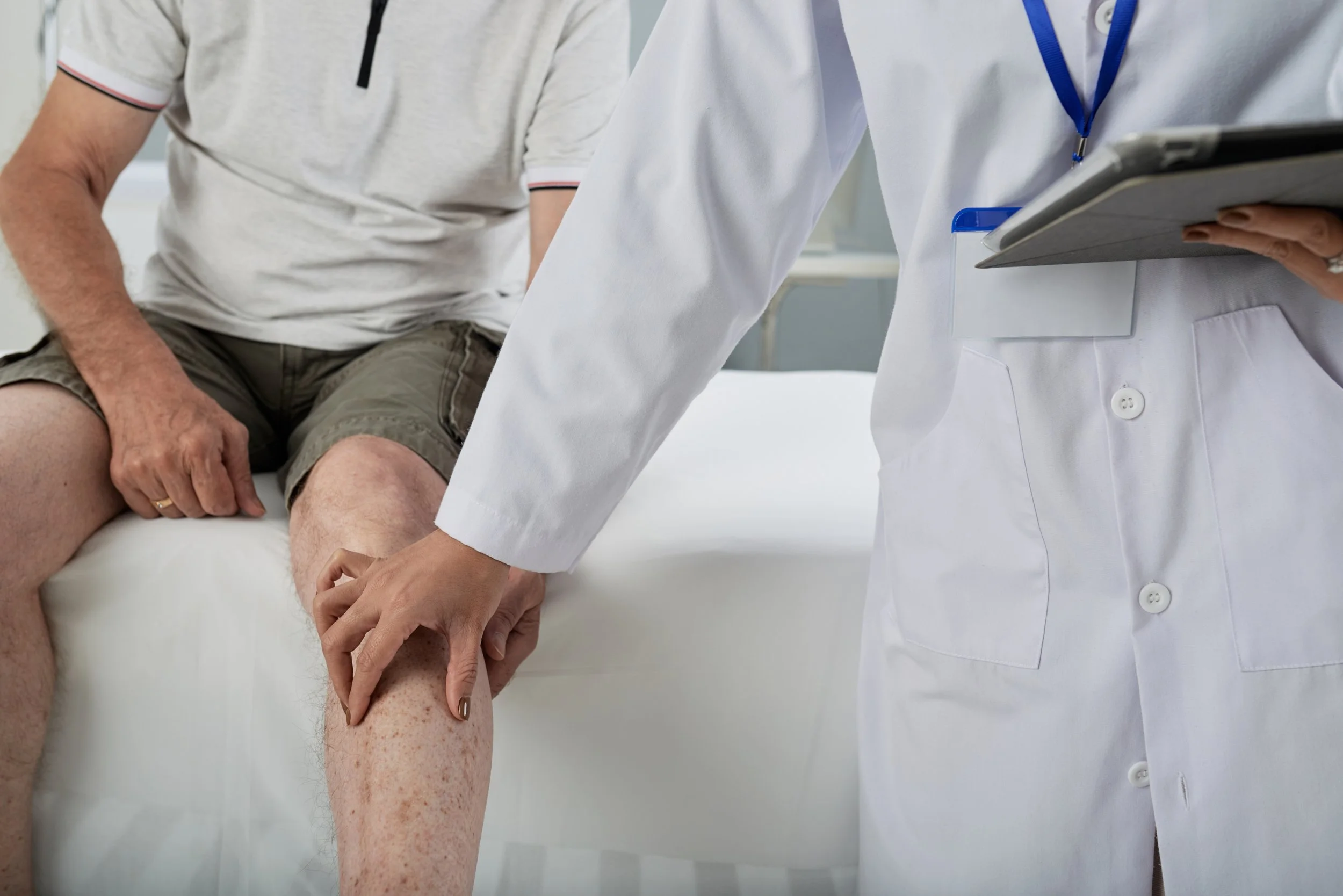
Venous Disease
Edema, Skin Discoloration, Spider Veins
What Are Varicose Veins?
Varicose veins are large, bulging, twisted veins that you can see protruding like a cord under the skin's surface. They are most commonly found in the legs and may appear more pronounced when standing. Symptoms such as these indicate an underlying condition that is often treatable.
Keep in mind that vein disease may not always be visible. Some types of vascular disease occur deep under the skin and may become worse with time. Our vein and vascular specialists find and diagnose these hidden vein conditions with advanced ultrasound imaging.
What Causes Varicose Veins?
Men and women of all ages can develop varicose veins. Varicose veins are enlarged, swollen, and twisting veins, often appearing blue or dark purple. They occur when the valves in your veins do not work properly, causing blood to collect and pressure to build up.
Here are some of the main causes of varicose veins:
Age
As you get older, your veins can lose elasticity causing them to stretch. The valves in your veins may become weak, allowing blood that should be moving toward your heart to flow backward.
Pregnancy
During pregnancy, the volume of blood in your body increases, but the flow of blood from your legs to your pelvis decreases. This circulatory change is designed to support the growing fetus but can also result in enlarged veins in your legs.
Obesity
Being overweight puts extra pressure on your veins, which can lead to varicose veins.
Lack of Movement
Standing or sitting for long periods can cause blood to pool in the veins of your lower extremities, increasing the risk of varicose veins.
Genetics
If your family has a history of varicose veins, you may be more likely to develop them.
Gender
Women are more likely to develop the condition, possibly due to hormonal changes during menstruation, pregnancy, and menopause.
Varicose veins can cause aching pain and discomfort and sometimes lead to more serious problems. They can also be a cosmetic concern. Treatments are available, both medical and self-care, to alleviate symptoms and prevent complications. If you are concerned about varicose veins, it's best to consult with a healthcare provider.



What Are Spider Veins?
Spider veins are small veins just under the surface of the skin indicating underlying disease.
Spider veins are tiny, thin veins that vary in color and that you can see just under the surface of your skin. They're so named because they remind us of spider webs, and are also sometimes described as looking like marble.
Symptoms Of Spider Veins
One of the many symptoms of vein disease you may notice is the appearance of spider veins. These can be associated with discomfort.
Appearance: Tiny, thread-like; variant colors.
Location: Usually in the legs but can appear in the face, chest, and other locations.
Severity: Some are a minor cosmetic issue, but some cases may cause persistent itching or pain.

What Causes Spider Veins?
These are usually caused by valves that are no longer working properly.
Malfunctioning valves in veins can cause blood to flow backward instead of upward toward the heart. Some of these backed-up veins can lead to non-functional, "dead-end" veins that appear underneath the surface of the skin as spider veins.






